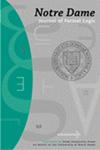The Diversity of Minimal Cofinal Extensions
IF 0.5
3区 数学
Q2 LOGIC
引用次数: 0
Abstract
Fix a countable nonstandard model M of Peano Arithmetic. Even with some rather severe restrictions placed on the types of minimal cofinal extensions N ≻ M that are allowed, we still find that there are 20 possible theories of (N ,M) for such N ’s. The script letters M,N ,K (possibly adorned) always denote models of Peano Arithmetic (PA) having domains M,N,K, respectively. The set of parametrically definable subsets of M is Def(M). If J ⊆ M , then Cod(M/J) = {A ∩ J : A ∈ Def(M)}. A cut of M is a subset J ⊆ M such that 0 ∈ J 6= M and if a ≤ b ∈ J , then a + 1 ∈ J . The cut J is exponentially closed if 2 ∈ J whenever a ∈ J . Suppose that M ≺ N . Their Greatest Common Initial Segment is GCIS(M,N ) = {b ∈ M : whenever N |= a ≤ b, then a ∈ M}, which is M if N is an end extension of M and is a cut otherwise. If J is a cut of M, then N fills J if there is b ∈ N such that whenever a ∈ J and c ∈ M\J , then N |= a < b < c. The interstructure lattice is Lt(N /M) = {K : M 4 K 4 N}, ordered by elementary extension. If 1 ≤ n < ω, then n is the lattice that is a chain of n elements. One of the themes of [4] is the diversity of cofinal extensions, exemplified by the following theorem. Theorem A: ([4, Theorem 7.1]) If J is an exponentially closed cut of countable M, then there is a set C of cofinal elementary extensions of M such that: (1) |C| = 20 ; (2) if N ∈ C, then GCIS(M,N ) = J , Cod(N /J) = Cod(M/J) and N does not fill J ; (3) if N1,N2 ∈ C are distinct, then Th(N1,M) 6= Th(N2,M); (4) Lt(N /M) ∼= 3 for each N ∈ C. ([4, page 285]) It was left open, and specifically asked ([4, Question 7.5]), whether the 3 in (4) can be replaced by 2 (so that every N ∈ C is a minimal Date: September 17, 2021.最小协终扩展的多样性
修正了Peano算法的一个可数非标准模型M。即使对允许的最小共尾扩张N≻M的类型施加了一些相当严格的限制,我们仍然发现对于这样的N’s,有20个可能的(N,M)理论。脚本字母M、N、K(可能是修饰的)总是表示分别具有域M、N和K的Peano算术(PA)的模型。M的参数可定义子集的集合是Def(M)。如果J⊆M,则Cod(M/J)={AåJ:A∈Def(M)}。M的割是子集J⊆M,使得0∈J6=M,并且如果A≤b∈J,则A+1∈J。当a∈J时,如果2∈J,则割J是指数闭合的。假设M≺N。它们的最大公共初始段是GCIS(M,N)={b∈M:当N|=a≤b时,则a∈M},如果N是M的末端扩展,则为M,否则为割。如果J是M的割,则N填充J,如果存在b∈N,使得每当a∈J和c∈M\J时,N|=a
本文章由计算机程序翻译,如有差异,请以英文原文为准。
求助全文
约1分钟内获得全文
求助全文
来源期刊

Notre Dame Journal of Formal Logic
MATHEMATICS-LOGIC
CiteScore
1.00
自引率
14.30%
发文量
14
审稿时长
>12 weeks
期刊介绍:
The Notre Dame Journal of Formal Logic, founded in 1960, aims to publish high quality and original research papers in philosophical logic, mathematical logic, and related areas, including papers of compelling historical interest. The Journal is also willing to selectively publish expository articles on important current topics of interest as well as book reviews.
联系我们:info@booksci.cn
Book学术提供免费学术资源搜索服务,方便国内外学者检索中英文文献。致力于提供最便捷和优质的服务体验。
Copyright © 2023 布克学术 All rights reserved.
京ICP备2023020795号-1
 京公网安备 11010802042870号
京公网安备 11010802042870号
京ICP备2023020795号-1

Book学术文献互助群
群 号:604180095

 求助内容:
求助内容: 应助结果提醒方式:
应助结果提醒方式:
